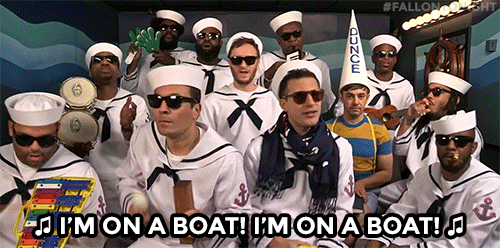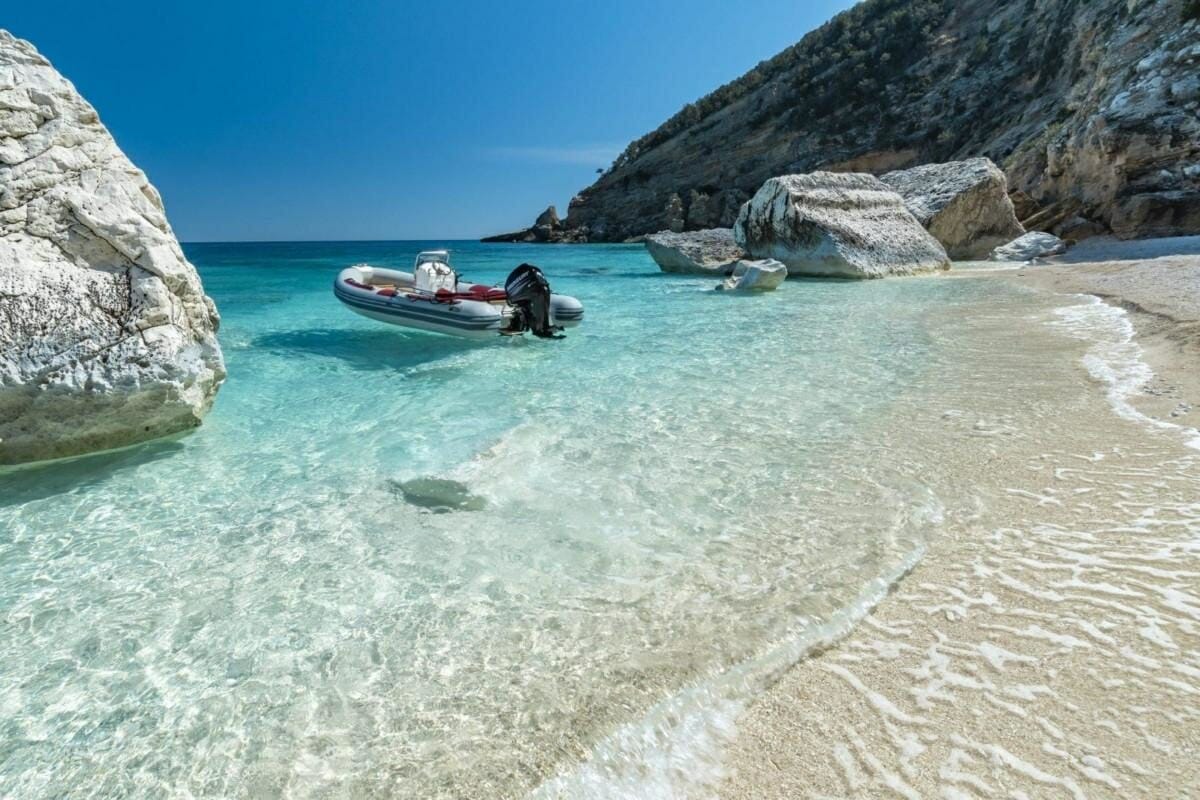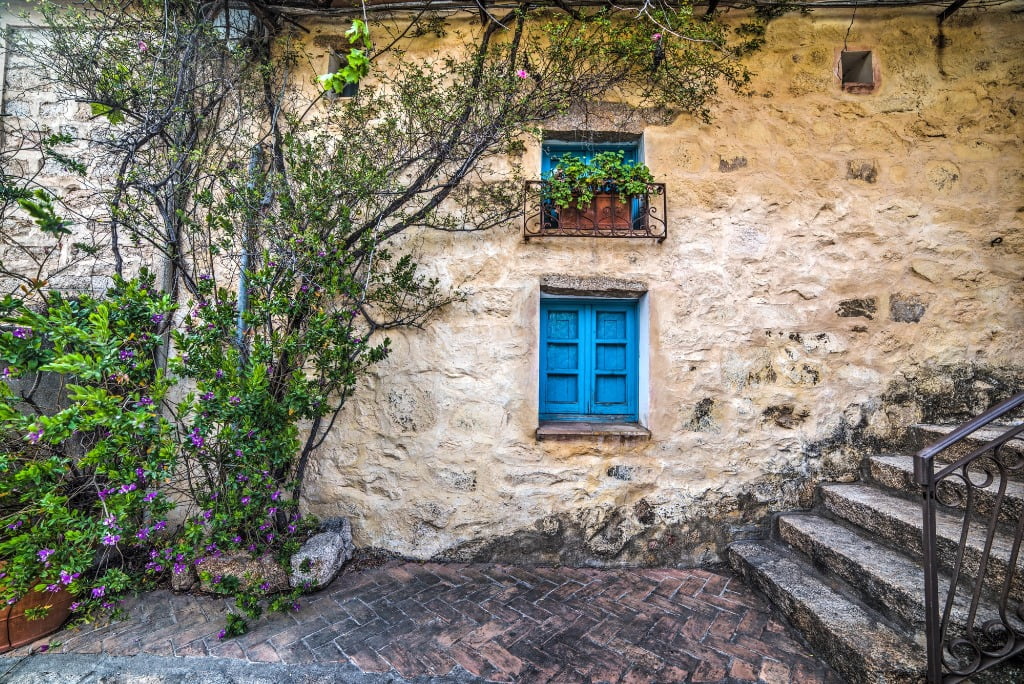Introduction
In Italy, driving dinghies or boats with engines over 40 hp requires a licence. However, it is permitted to drive boats up to 40 hp without a licence. In this guide I will outline the most important things to know about renting a dinghy without a licence.
I will give you some hints on the rules of navigation, some best-practices and some manoeuvring tricks that you will surely appreciate, especially if you have never been to sea. It is certainly not with this guide that you will become a long-distance captain if you have never gone to sea and never chartered a dinghy, you will get some useful tips from it.
The dinghy is the best means of navigation for beginners because it is as easy to drive as a go-kart, it is safe and unsinkable by definition. All the advice you read in this guide is advice and not skills you absolutely must have. The guide is designed for those who are curious and simply want to have a little more knowledge.
1. Renting a rubber boat: what is the leasing contract?
Once you have booked your dinghy rental online and arrived at the port of departure on the day of departure, you must first sign the rental contract. It is important to keep a copy of the contract on board along with the other obligatory documents so that you can easily show them in case the Coast Guard or other authorities ask you to.
In general, a standard rental contract for an inflatable boat without a licence requires the following fields to be completed:
First and last name
Date of birth
Residence
Type of identification document
Identification document number
Duration of the lease
Date of departure
Time of departure
Return date
I am now returning
Dinghy type and model
Number of people on board
Adults
Minors
Deposit
Most rentals require a deposit - often by credit card - to protect against damage.
How does bail work?
The hirer "swipes" the card for authorise the amount defined in the contract. This amount is not charged but only authorised, which means that:
- if the dinghy has not been damaged in any way when returning to port, as is the case with 99% rentals, the authorisation is cancelled
- if the dinghy has been damaged on its return to port, the charterer will charge the previously authorised amount. Remember that there may be an excess.
How much is the deposit?
The amount of the deposit depends on the type of dinghy rented, and can range from 300 euros to 10,000 euros. In any case, this information is always clearly stated in the contract.
2. Renting a rubber boat: what to check before departure
Anyone who has never been in an inflatable boat thinks that the boat is unsinkable, indestructible and can reach even the lowest depths. This is true, but not for beginners.
Even though the dinghy doesn't have a bulb and doesn't go as deep as a sailboat, it still has parts that are permanently underwater and these are:
- part of the hull
- the foot of the engine
- the engine propeller
If an inexperienced sailor swipes a rock, for example, the propeller is the first thing to get damaged. For this reason, in order to guarantee that the propeller is in excellent condition, the charterer will show you that it is in perfect condition: not damaged, twisted or bent. This is because if the propeller is damaged on your return, you are responsible for paying for the damage.
On-board equipment
The charterer will show you all the mandatory equipment on board:
- life jackets for each person on board
- donut
- extinguisher
- rockets
- engine booklet
- insurance
- and the contract which you will have carefully kept in the documents envelope
3. Renting a rubber boat: how to turn on
If a licence is not compulsory, there's a reason: driving an inflatable boat with a 40 hp engine, tending up to 5.90 metres, is a piece of cake.
How to start the dinghy engine
Most of the engines in inflatable boat rentals are 4-stroke fuel-injected, so the ignition is simply a matter of turning the key.
- Enter key
- Cut the safety fork
- Turn the key
- You will hear an acoustic sound
- When the acoustic sound ends, you can turn the key again and start the engine.
What is the safety fork?
The key has a black plastic fork that must be inserted into the safety button. When navigating, you will need to tie the red elastic band around your wrist so that the engine will turn off in an emergency.
On-board instrumentation
Not all dinghies, especially small ones without a licence, are super-equipped with on-board instrumentation. In fact, it wouldn't even be necessary, as a 40hp dinghy is designed for short, day-to-day, inshore sailing, so there's no need for extensive nautical equipment. Below is the instrumentation usually found in the console of an inflatable boat for hire:
- rev counter
- fuel level
- trim level
What do the buttons on the handset mean?
The control panel in the console allows you to control:
- Bilge pump
- Fresh water shower
- Navigation lights
🏆 TIP
When you want to rinse off with fresh water after taking a dip, remember to turn the engine key, otherwise the shower won't start. And then remember to turn it off to avoid draining the battery!
4. Renting a rubber boat: how to leave the port
Now that you're on board, familiar with the dinghy and its instruments, you're ready to leave port and enjoy the day at sea!
Usually the mooring operator will give you a hand with the unmooring manoeuvre, especially if you are not very experienced.
When manoeuvring in and out of the harbour, fibreglass boats have to pull out their wings to reduce damage in the event of a collision, whereas the dinghy, being a 'big, soft wing', does not have to comply with this practice. In any case, always do whatever makes you feel safest.
🏆 TIP
Two trivial but always useful tips:
1. before leaving your berth, even if supported and supervised by the mooring operator, make sure there are no other boats in motion to avoid collisions.
2. before leaving the berth, check which direction the wind is coming from as this will affect your manoeuvre

5. Renting a rubber boat: navigation tips
Now that you have left the harbour with a masterful manoeuvre and you have the sea at your disposal, you need to get to grips with a few things. The main elements are: the wind and the waves, the engine
The wind and the waves
The wind pushes the dinghy across the water and can help navigation if it pushes in the direction you are sailing or it can 'hinder' it if it pushes in different directions. Waves tend to follow the direction of the wind.
How to catch waves with an inflatable boat?
In order to ensure smooth sailing without constant jolts, you should always try to catch waves "on the jaw", i.e. with the bow slightly offset 3/4 from the wave. In this way the wave breaks and slides along the dinghy, reducing its force. The idea is always to never catch bow or stern waves straight on.
What is engine trim?
What is trim? Trim is the most fun part of the dinghy engine! It is a tool that allows you to adjust the trim of the dinghy in relation to the weather conditions and the people on board. By simply pressing the button on the handle, the engine is raised and lowered to help the dinghy trim and distribute the weight evenly.
There are 3 trim levels:
- negative (sinks the motor foot into the water)
- neutral (this is the default setting, natural)
- positive (lift the foot of the engine out of the water)
What is the trim for?
The correct use of the trim allows:
- to navigate the waves with greater fluidity
- bring the dinghy on plane faster
- optimise fuel consumption
How to adjust the trim?
Before adjusting the trim - i.e. the height of the engine - it is important to distribute the people on board evenly so that the weights are evenly distributed throughout the dinghy. The stern (the rear) is physiologically and structurally more thoughtful than the bow (the tip) because it is on the transom that the engine is mounted.
Only after distributing the weights can the trim be adjusted for smoother navigation. In a very simplified way:
- the dinghy sails better when it is on plane to bring the dinghy on plane, you have to put the trim all the way down, i.e. all the way down on the transom
- Once this stage has been completed, the trim must be returned to the neutral position.
🏆 TIP
What does "bring the dinghy on plane" mean? Bringing the dinghy on plane means making sure that the hull is all resting on the water and the dinghy does not remain "soaring". Trim is not essential for a great day at sea, but it is fun to experiment!
6. Renting a rubber boat: how to get to the beach
The hirer usually gives you a map with the points of interest to visit, recommended diving spots, lunch breaks and photographs of the coves. To discover the area and its seabed, there is also theNavionics navigation appThe app is a must-have tool in every yachtsman's kit. The app is chargeable but there is a free trial period.
Getting to the beach by dinghy
It is forbidden to take the dinghy directly to the beach, but there are two permitted ways: by launching lane and by swimming.
Launching lane
The launching lane is a corridor bordered by two rows of buoys. If you need, or simply want, to access the beach, enter only and exclusively along this stretch of sea. After unloading your luggage and getting people off the beach, you will have to take the dinghy back over the buoys at a minimum distance of 200 metres from the beach. If you also want to get to the beach, you can either swim there or ask the mooring operator if he can "come and get you".
Swimming
Some beaches are UNESCO World Heritage Sites or belong to a Marine Protected Area or nature reserve, so motorised navigation is not permitted. In this case you can only anchor at least 200 metres from the beach and swim to it.
In some parts of the sea, there is a complete ban on swimming or sailing. So ask your charterer if there are any such bans in your itinerary.
manoeuvres not to be done even if they are very scenic
7. Renting a rubber boat: how to anchor
How to anchor in 4 simple steps. You've finally reached the cove you've been dreaming of since this winter and can't wait to do some snorkelling! But before you dive in, you have to anchor.
How do you drop the anchor?
Anyone who has never driven a dinghy thinks that this operation is very simple - and indeed it is! It is not uncommon, however, to come across yachtsmen trying to anchor and after twenty minutes, still fumbling around doubtfully. Follow these practical tips for anchoring.
Step 1
See what others are doing
First of all, before dropping the anchor you need to understand how to "set up" the dinghy. Look at how other dinghies or boats of the same size are positioned and you will notice that they are all positioned in the same direction, i.e. with the bow to the wind. Therefore, before dropping the anchor, position the dinghy with the bow to the wind.
Step 2
Abundant in everything
To avoid running into others or worse, onto the rocks, bear in mind that the sea is not asphalt and the dinghy is not a car: remaining "stationary" is almost impossible even if there is very little wind. In addition, you must consider that the steps to anchor are different and take time:
- remove the anchor from the locker
- position yourself at the bow with the anchor in hand
- lower the anchor and wait for it to sink to the bottom
- wait until the line is fully extended
- tie the line to the bollard
And in that time, your dinghy... has moved on. If you have been "careful"... it will have moved to a safe body of water and you can do all the snorkelling you want.
If, on the other hand, you have calculated a tight time and little space, your dinghy will probably be too close to that of another yachtsman, who will undoubtedly be nice and you will become close friends, but you will certainly have to move and redo the manoeuvre in order to stay at a suitable distance.
To make a correct anchoring manoeuvre you must therefore consider that you need to longer than you think and more space than you think.
🏆 TIP
Remember that the dinghy... has no brakes! Keep the engine running for the duration of the manoeuvre so that you can correct the manoeuvre on the move.
Step 3
Come on top!
There is an old adage that says 'little line, little sailor'. To anchor correctly, it is essential to "give line": the more line you lay on the bottom, the safer your mooring will be. It is customary to give 3-5 times as much line as the bottom. So if the bottom is 5 metres, you should give between 15 and 25 metres of line.
Step 4
Check that the anchor has taken
To find out if you have anchored correctly and can enjoy a dip or a nap without having to be on your toes all the time, just follow this simple practical tip: identify two fixed points, one in front of you and one to the side. Wait a minute. If your position in relation to those points does not change, bravo, you have anchored. If, on the other hand, you find that you are moving relative to the points you have chosen, it means that you have not anchored correctly and you need to repeat the manoeuvre.
🏆 TIP
A general recommendation is always to anchor in shallow waters, considering that the line supplied is not very long; in sandy or not too rocky waters, to avoid running aground.
8. Renting a rubber boat: how to open the awning
You have finally dived in and explored the coastline and come across many wonderful fish. You have climbed back into the dinghy using the ladder and want to stay in the shade for a well-deserved nap.
How to open the awning?
Opening the awning is really easy, you just have to stretch out the fabric and tie it to the hooks for safety using the special straps. There are different types of awning with different materials and shapes, but in any case it is always a good idea:
- even if it is very strong, made of steel or mounted on a rollbar, close the awning while sailing to prevent it from being an obstacle while driving or from acting as a sail in sudden winds
- tying the awning. After folding the awning, remember to tie it with the appropriate ribbons to prevent it from sailing and making annoying noises....
🏆 TIP
Before setting off again, fold up the ladder and secure it to the dinghy so that it is firmly in place while sailing.
9. Renting a rubber boat: navigation rules
Did you go to sea just because you bought a ticket for a boat excursion or as a guest on a sailing trip? No problem. There's always a first time for everything. Even to become a captain in 1 day!
In this section we look at the rules and best practices for safe and legal navigation:
- entering and leaving ports should be done with the engine at minimum speed and keeping to the right.
- those leaving the port have right of way
- navigation is permitted at a distance of at least 100 metres from the sheer coastline and 200 metres from beaches
- Pay close attention to red floating buoys with white diagonals. They indicate the presence of divers or snorkellers. Slow down and keep at least 100 metres away from the signal.
- it is forbidden to collect sand, stones, animals or objects from the sea or beaches
- it is prohibited to fish in the delimited area of theMarine Protected Area
- in the event of a breakdown, call the contacts listed in the rental agreement
- the dinghy is your responsibility: avoid areas of shallow water to prevent damage to the keel, engine foot, propeller or other parts
Other navigation tips
- always give way to the right when navigating, as in a car
- Sailing boats have longer manoeuvring times and therefore always have the right of way.
- large boats, such as ferries, always have right of way
- sailboats, when mooring, 'give a lot of line' so try to pass away to avoid going over them.
10. Renting a rubber boat: fuel included or excluded?
The charter day is over and, alas, you have to take the dinghy back to port. First, however, we have to stop and refuel.
Is fuel included in the rental?
The cost of fuel is almost always excluded from the rental cost because the amount of fuel consumed depends on factors such as:
number of persons on board
marine weather conditions
rough sea and headwind
These conditions require more effort from the engine and consequently, more fuel
driving style. Just as with a car: the faster you go, the higher the fuel consumption. In order to have a correct driving style it is necessary to get the dinghy on plane immediately and settle the boat on its correct trim.
type of excursion. If it's an exploration of the area you'll spend more time with the engine running, if you like to stop for long dips, the engine will be running for less time.
For this reason, before returning home, you should go to the port's petrol station and top up the fuel consumed, so that you only pay the actual amount.
Please note: not all ports have a petrol pump. In this case, the charterer will top up the fuel consumed in front of you. In both cases, you will be responsible for the cost of the fuel.
How much fuel does it take for a day's rental?
Due to the premise above, it is not possible to say how much fuel you will consume during your rental.
Bonus: netiquette

In this sea, stay at home!
Porto San Paolo, November 2020
How useful was this post?
Click on a star to rate it!
Average rating 4.8 / 5. Vote count: 106
No votes so far! Be the first to rate this post.












4 responses
How much for 4 people
It depends on the type of dinghy. Choose the dinghy you are interested in and send a private message. Usually, for 4 people, a 5/6 metre dinghy with a 40 HP engine is sufficient.
Do you think I can bring a small child?
There is no right or wrong answer, it also depends on the age of the child. A 1, 2 year old baby in the sun might get very tired. A 4.5 year old, on the other hand, might have a lot of fun!